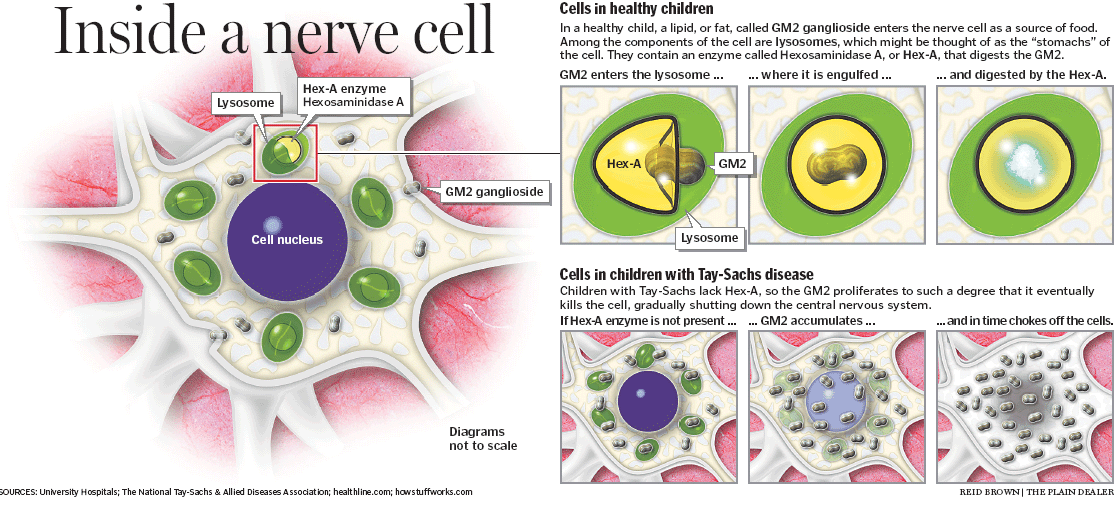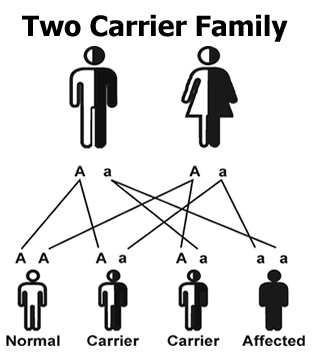
Causes
There are 2 forms of Tay-Sachs disease, late-onset or infantile. The infantile version is severe; often noticeable at 3-5 months of age and results in death at 3-5 years of age. The late-onset version is much slower than the infantile version, as the beta-hexosaminidase A enzyme appears but the numbers are reduced. There is a third form (juvenile), appearing at childhood or adolescence, however it is rare and has various effects/symptoms, depending on the time when the first symptoms show.
Tay-Sachs disorder is a genetic disorder that is caused by a defect in Chromosome 15, or more specifically the hexosaminidase A (HEXA) gene in Chromosome 15. Both parents must be carriers and there is a 25% chance of getting the disease, which means it is autosomal recessive. The defect causes a deficiency in the enzyme beta-hexosaminidase A. This enzyme helps break down a fatty acid called GM2 ganglioside. If there is a deficiency, GM2 ganglioside will accumulate, eventually killing cells, causing the group of symptoms known as Tay-Sachs disease.


Location of HEXA gene
(15q24.1)

How Tay-Sachs works
Detection of Carriers/infected
A simple blood test is needed to detect whether a person is infected or a carrier. Couples who plan to or already have a child can get screened to see if their baby is infected, and a child who is having hearing, movement, or vision problems is usually screened for Tay-Sachs.

**Random Fact #1337**
There are many names for Tay-Sachs disorder. For example:
-
B variant GM2 gangliosidosis
-
GM2 gangliosidosis, type 1
-
HexA deficiency
-
Hexosaminidase A deficiency
-
Hexosaminidase alpha-subunit deficiency (variant B)
-
Sphingolipidosis, Tay-Sachs

HEXA enzyme
Find out more about Tay-Sachs Disorder!
NTSAD (National Tay-Sachs and Allied Diseases Association
National Organization for Rare Disorders webpage for Tay-Sachs (For more experienced readers)
Tay-Sachs Pedigree
Side lesson: How do geneticists indicate the location of a gene?
The location of a specific gene is called the cytogenetic location. It usually looks somewhat like this: 15q21.1, 15q21-q28, 15q21, et cetera.
The format is: X(p/q)YZ.N[-(p/q)YZ.N], where
X is the chromosome number, or for sex chromosomes, X or Y may be used.
(p/q) designate the arm which the specific gene is on, where p designates short arm and q designates long arm.
Y is the gene region, which is designated based on a chromosome when it is stained a certain way.
Z is the band inside the region marked by Y, and it is also determined by staining the chromosome.
N is the sub-band, it is inside the region marked by Z, and it is also again determined by staining the chromosome.
The [] brackets designate an optional addition, if the exact location is not known. It follows the same rules as above, however it marks one end of a region of the gene; the other end is marked by the YZ.N not inside the brackets. Note that YZ.N inside the brackets cannot be the same as the YZ.N outside the brackets.

